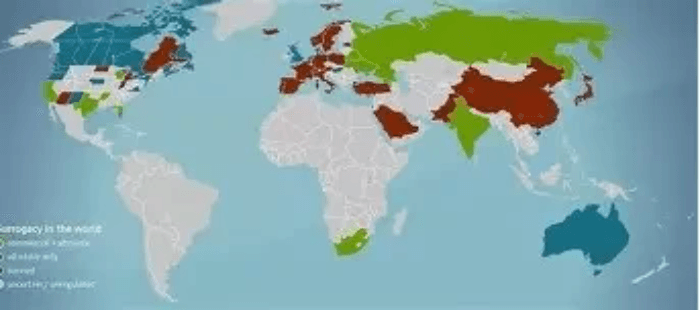In an era where medical science continues to break barriers, Interventricular Fibrillation (IVF) and surrogacy have emerged as transformative pathways for individuals and couples longing to build families. While the terms are often used interchangeably, IVF and surrogacy represent distinct yet interconnected processes in the realm of assisted reproductive technology (ART). For many—especially those facing infertility, same-sex couples, or single parents by choice—these options offer hope, possibility, and a chance to experience parenthood. This comprehensive guide explores the science, emotional journey, legal considerations, and global landscape of IVF and surrogacy, providing valuable insights for those considering these life-changing options.
Understanding IVF: The Foundation of Modern Reproductive Medicine
In Vitro Fertilization (IVF) is a cornerstone of reproductive medicine. The process involves retrieving mature eggs from a woman’s ovaries, fertilizing them with sperm in a laboratory dish (“in vitro” meaning “in glass”), and transferring the resulting embryo(s) into the uterus. First successfully performed in 1978, IVF has since helped millions of people worldwide conceive.
The IVF process typically includes several stages: ovarian stimulation, egg retrieval, fertilization, embryo culture, and embryo transfer. Hormonal medications are used to stimulate the ovaries to produce multiple eggs, increasing the chances of successful fertilization. Once retrieved, eggs are combined with sperm, and after fertilization, embryos are monitored for several days before being transferred into the uterus.
IVF is often recommended for individuals or couples dealing with blocked fallopian tubes, male factor infertility, endometriosis, unexplained infertility, or genetic disorders. It also serves as the first step in many surrogacy journeys.

Surrogacy: When Another Carries the Dream of Parenthood
Surrogacy is a reproductive arrangement in which a woman—known as the surrogate or gestational carrier—carries and gives birth to a child for another individual or couple. There are two main types: traditional surrogacy and gestational surrogacy.
In traditional surrogacy, the surrogate uses her own egg, making her the biological mother of the child. This method is less common today due to complex legal and emotional implications. In contrast, gestational surrogacy involves implanting an embryo created via IVF into the surrogate’s uterus. The embryo may be formed using the intended parents’ genetic material, donor eggs, donor sperm, or a combination. In this case, the surrogate has no genetic link to the baby.
Gestational surrogacy has become the preferred model globally due to clearer legal parentage and reduced emotional complexity. It allows intended parents to have a biological connection to their child while relying on a compassionate third party to carry the pregnancy.

The Intersection of IVF and Surrogacy: How They Work Together
IVF is an essential component of gestational surrogacy. Without IVF, creating an embryo outside the surrogate’s body would not be possible. The process begins with the same IVF steps: stimulating egg production (in the intended mother or egg donor), retrieving eggs, fertilizing them with sperm, and culturing the embryos.
Once viable embryos are created, one or more are selected for transfer into the surrogate’s uterus. The surrogate undergoes hormone therapy to prepare her endometrial lining for implantation. If successful, the pregnancy proceeds under medical supervision, with the surrogate receiving regular prenatal care.
This synergy between IVF and surrogacy enables a wide range of family-building possibilities. Same-sex male couples, for example, can use donor eggs, IVF, and a gestational surrogate to have a child genetically related to one partner. Single men or women may also pursue this path with the help of donors and a surrogate.
It’s important to note that while IVF can be used independently, surrogacy almost always requires IVF—making the two technologies deeply intertwined in modern fertility solutions.
Legal and Ethical Considerations Across Jurisdictions
One of the most complex aspects of IVF and surrogacy is the legal framework, which varies dramatically from country to country—and even within regions of the same nation. Some countries, like Canada and certain U.S. states, have well-established legal protections for intended parents and surrogates, including pre-birth parentage orders that establish legal rights before delivery.
In contrast, other nations ban commercial surrogacy or prohibit it entirely. For example, Germany and France do not recognize surrogacy agreements, while India—once a popular destination—now restricts surrogacy to altruistic arrangements for its own citizens.
Intended parents considering international surrogacy must navigate immigration, citizenship, and parental rights issues. A child born abroad via surrogacy may not automatically acquire citizenship in the parents’ home country, leading to potential legal complications.
Ethically, surrogacy raises questions about consent, compensation, and the well-being of all parties involved. Reputable agencies and clinics emphasize informed consent, psychological screening, and fair compensation to protect surrogates and ensure ethical practices.

Emotional and Psychological Dimensions
The journey through IVF and surrogacy is not just medical—it is profoundly emotional. Intended parents often face years of infertility, loss, and uncertainty before pursuing these options. The process can be physically demanding, financially taxing, and emotionally draining.
For surrogates, the experience is equally significant. While many report deep fulfillment from helping others become parents, they also undergo hormonal changes, physical discomfort, and social stigma in some communities. Psychological support is crucial for both parties throughout the process.
Open communication, counseling, and strong support networks are essential. Many fertility clinics now offer integrated mental health services to help intended parents and surrogates navigate the emotional landscape.
Building a relationship between intended parents and the surrogate—ranging from minimal contact to close friendship—can enhance the experience. Trust, respect, and mutual understanding form the foundation of a successful surrogacy journey.
Global Trends and the Future of Family Building
The demand for IVF and surrogacy is rising globally. According to the Society for Assisted Reproductive Technology (SART), over 80,000 IVF cycles are performed annually in the United States alone, with success rates improving each year due to advances in embryo screening and cryopreservation.
Surrogacy, while less common, is gaining visibility. The global surrogacy market is projected to grow significantly over the next decade, driven by increasing acceptance, medical advancements, and the expansion of LGBTQ+ family planning.
Technological innovations such as preimplantation genetic testing (PGT) allow for the screening of embryos for genetic disorders, improving success rates and reducing the risk of inherited conditions. Additionally, the freezing and storage of eggs, sperm, and embryos (cryopreservation) offer greater flexibility and planning options.
As societal norms evolve and reproductive rights expand, IVF and surrogacy will continue to play a vital role in redefining what it means to be a family.

Conclusion: Empowering Choices in Reproductive Health
IVF and surrogacy are more than medical procedures—they are deeply personal journeys toward parenthood. Whether used independently or in tandem, these technologies offer life-changing opportunities for individuals and couples across the world.
For those considering these paths, thorough research, professional guidance, and emotional support are essential. Choosing reputable clinics, understanding legal implications, and prioritizing ethical practices can make all the difference in achieving a successful outcome.
As science advances and societies become more inclusive, the dream of building a family is becoming a reality for more people than ever before. IVF and surrogacy stand at the forefront of this revolution, empowering individuals to create the families they’ve always envisioned.
By sharing accurate, compassionate, and informative content like this, we aim to support, educate, and inspire those on their path to parenthood—ensuring that everyone has access to the knowledge they need to make informed decisions about their reproductive futures.
